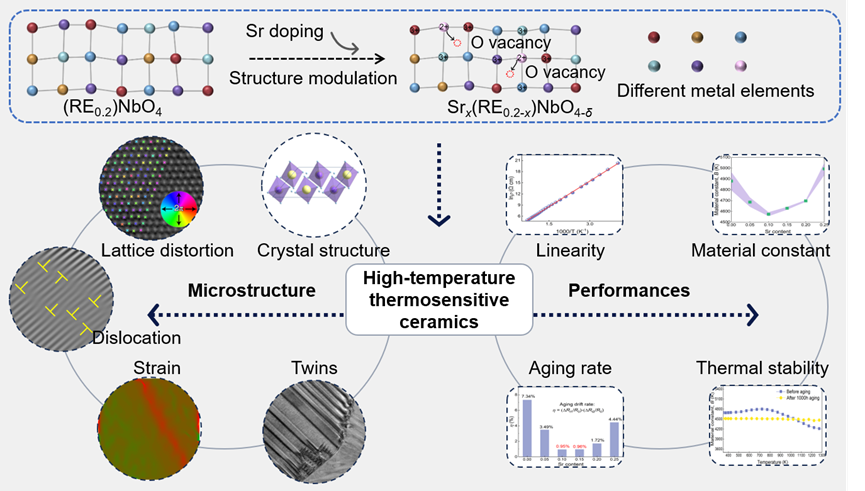
To meet the demands of extreme high-temperature environments, such as aerospace engines and thermal systems in new energy vehicles, high-temperature thermosensitive sensors need to demonstrate high stability and sensitivity. Conventional materials often struggle with performance under these conditions, while emerging high-entropy materials offer superior thermal and chemical stability due to their entropy-stabilization effect. However, their strong lattice disorder reduces carrier mobility, leading to poor electrical transport performance and limiting the accuracy of resistance-temperature responses at high temperatures. Thus, developing new thermosensitive materials that balance lattice stability and carrier transport efficiency is essential for enhancing high-precision sensing technologies.
To address this challenge, researchers from the Xinjiang Technical Institute of Physics and Chemistry of the Chinese Academy of Sciences, have successfully developed high-entropy thermosensitive ceramics based on rare-earth niobates (ReNbO4, where Re represents rare-earth elements) with fergusonite-type structures, using an oxygen vacancy regulation strategy.
The synergistic effect between entropy stabilization (induced by multi-component rare-earth ion doping at A-sites) and Sr²⁺ allovalent doping significantly increases oxygen vacancy concentration, thereby optimizing the material's electron transport properties and lattice stability.
The study demonstrates that the oxygen vacancy-induced entropy stabilization strategy simultaneously modulates the material's microstructure, forming stabilized features such as twin domains, lattice distortions, and dynamic reconstruction, which effectively enhances both the linearity of the temperature-resistance response and high-temperature stability.
The synthesized material exhibits exceptional environmental adaptability (operable across a wide temperature range from 223 K to 1423 K), high thermal stability (with an aging drift of less than 1% after 1000 hours of high-temperature aging), and a temperature coefficient of resistance (0.223 %/K at 1423 K), providing theoretical guidance for designing novel thermally sensitive ceramics for extreme environments.
This study was published in Small. This work was supported by the National Natural Science Foundation of China, the Youth Innovation Promotion Association of the Chinese Academy of Sciences, the Natural Science Foundation of Xinjiang Uygur Autonomous Region, and the Xinjiang Tianshan Training Program.

Figure. Relationship Between Microstructure and Properties of High-Temperature Thermosensitive Ceramics (Image by Prof. CHANG Aimin's group)

86-10-68597521 (day)
86-10-68597289 (night)

52 Sanlihe Rd., Xicheng District,
Beijing, China (100864)

